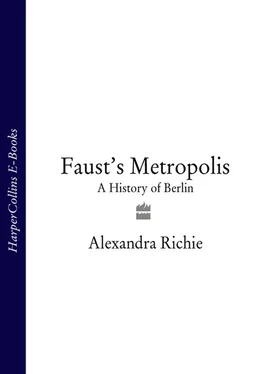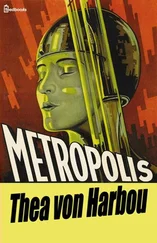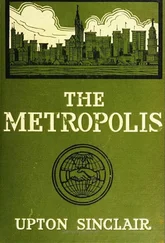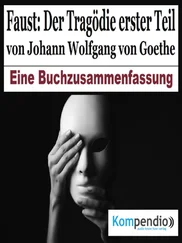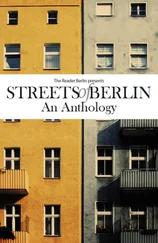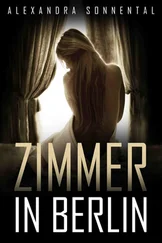The writing of this book would have been much less enjoyable without the contributions of my dear friends Victoria Joffe, Levin von Trott zu Solz, Erik Svendson, Marlene Apmann, Stephen Pettyfer, James Allison, Margaret Craig and Serguisz Michalski. I am grateful to the many members of my extraordinary extended family around the globe who have done so much, and I owe a special debt to my father-in-law, Wladyslaw Bartoszewski, and to Andrew Ciechanowiecki, not least for their insights into German-Polish history. Above all, I would like to thank my father, Karl-Wilhelm, who, through his love and knowledge of German culture first awakened my passion for our shared heritage; my mother, Heather, whose unconditional love made this possible, and my brother, Fraser, with whom I shared my first Berlin adventures and so much besides. Finally, I have dedicated this book to my beloved husband, Wladyslaw Bartoszewski, whose tolerance, kindness and compassion know no limits and without whom the book would simply never have come to fruition. My gratitude is beyond words.
Borderlands between Germany and Poland, 10th–11th Century
12th-Century Berlin and the Townships now included in the Modern City
14th-Century Berlin
Growth of Prussia 1640–1866
Prussia-Germany 1815–1871
Purported ‘Encirclement’ of Germany
Territorial Changes with Treaties of Brest-Litovsk and Versailles
The Government Quarter
Hitler’s Planned Autobahn Extension Straddling the Polish Corridor
Nazi Prison/Camp Network
Montgomery/Eisenhower Strategy for the Invasion of Germany
Chancellery Bunker
Sketched Plan for the Soviet Attack on the City Centre
Post-1945 Division of Berlin and Germany
Berlin Airlift
FAUST: Yes, one great thing did tempt me, one. You guess at it!
MEPHISTOPHELES: That’s quickly done. I’d choose a typical metropolis,
At centre, bourgeois stomach’s gruesome bliss,
Tight crooked alleys, pointed gables, mullions,
Crabbed market stalls of roots and scallions …
Then boulevards and spacious squares
To flaunt aristocratic airs;
And lastly, with no gate to stop them,
The suburbs sprawl ad infinitum.
(Goethe, Faust , Part Two, Act IV)
AT THE END OF GOETHE’S FAUST Mephistopheles takes his charge to the top of a great mountain and tempts him one last time. ‘You have surveyed the kingdoms of this world and all their glory,’ he says to Faust and asks him if his ‘insatiable appetite’ would not be fulfilled by a life in the heart of the metropolis. He offers him a teeming city where he could explore streets bustling with ‘activity and stench’, through crowds of men and women who run back and forth like ants whose nest has been kicked in. It is not a flattering picture; nor is it surprising that Goethe equates ‘the metropolis’ with the Devil’s world. The city in Faust is a mythical place, but it could well have been based on Berlin – which Goethe loathed. He visited only once, in May 1778, and apart from those he saw on his Italian journeys it was the only big city – certainly the only German ‘metropolis’ – that he ever experienced. When he arrived Frederick the Great was preparing for one of his campaigns and Goethe was overwhelmed by the ‘thousands upon thousands of people’ who filled the streets in ‘preparation of their sacrifice’. He found the grandiose buildings overbearing, and the crowds and the noise and the brashness of the place oppressive: ‘one doesn’t get very far with politeness in Berlin’, he snorted, ‘because such an audacious race of men lives there that one has to have a sharp tongue in order to keep oneself afloat.’ He summed up Berlin in a single word: ‘crude’. 1
Goethe was certainly not the only one to comment on Berlin’s raw edges. Like the metropolis in Faust it has always been a rather shabby place – it is neither an ancient gem like Rome, nor an exquisite beauty like Prague, nor a geographical marvel like Rio. It was formed not by the gentle, cultured hand which made Dresden or Venice but was wrenched from the unpromising landscape by sheer hard work and determination. The city was built by its coarse inhabitants and its immigrants, and it became powerful not because of some Romantic destiny but because of its armies and its work ethic, its railroads and its belching smokestacks, its commerce and industry and its often harsh Realpolitik. The longing to make something out of the flat, windswept landscape is still reflected in the remnants of Berlin’s grimy brick slums, in its ground-breaking industrial architecture, in its heavy imperial buildings, even in its rusting memorials to the gods of war – now embarrassing reminders of a belligerent past. Berlin is no beauty, to be sure, but for those captivated by her she does have a strange, rough magic; an endearing resilient spirit that is hard to define. In Streets in Berlin and Elsewhere Siegfried Kracauer, another admirer, wrote: ‘Before my window the city condenses into an image that is as wondrous as the spectacle of nature. This landscape is artless Berlin. Unintentionally she speaks out her contradictions – her toughness, her openness, her co-existence, her splendour.’ Kracauer is right – Berlin is special not as a result of any carefully placed statues or magnificent buildings, but because of an unintended ugly beauty which surrounds the old ochre Hinterhöfe or tenements in Moabit or the unpretentious local Kneipen with their menus of pea soup and Bockwurst and beer, or the extravagant nineteenth-century villas in Zehlendorf or the little fountain in Friedrichshain with its carved frogs and turtles. It is a sprawling city with an ever-changing landscape from the wealthy Tiergarten to the desolate anonymity of Hellersdorf; from the imposing Mitte to the old citadel at Spandau, one of the best-preserved Italian Renaissance fortresses in Europe. 2
It is impossible to escape the ghosts of history which hover above the Reichstag and over Göring’s intact Air Ministry and around the Brandenburg Gate. They waft around the remnants of the great brick and iron railway stations and the pieces of the Wall being ground to gravel on disused wasteland on the outskirts of the city; they linger in the pungent, mustard-coloured hallways of the monstrous East German housing projects and in the remnants of the Hinterhof cellars where, during the last century, the poor workers died of typhus and cholera. History is in the Landwehr Canal into which Rosa Luxemburg’s body was dumped in 1919, in Schinkel’s beautifully proportioned buildings and in the rubble mountains of ‘Mont Klamott’ and the Teufelsberg, the latter built on the ruins of Speer’s Technical University. Ghosts watch the shores of Berlin’s lovely lakes: the peaceful Grunewaldsee, so beautifully painted in Walter Leistikow’s 1895 work of the same name; or the Wannsee with its little sailboats and pretty aspects, the site of Heinrich von Kleist’s suicide in 1811 after writing the poem On the Morning of my Death , and of the conference which formalized the Final Solution. 3
But above all history is in the empty spaces – in the broad, windswept fields and vacant lots which still stretch across the centre of town, where one can still find pieces of wrought iron or porcelain from long-forgotten staircases or dinner services. History is there in the single houses which stand alone – all that is left of a row, or perhaps even an entire street – their awkwardness emphasized by the 1970s murals peeling from the huge, beige fire walls. History twines through the branches of the trees which follow abandoned streets and along rusty tram tracks which lead nowhere and lingers on the piece of ground where Spandau Prison once stood. In Berlin the wounds of a troubled past are still painfully open, the scars still fresh.
Читать дальше
